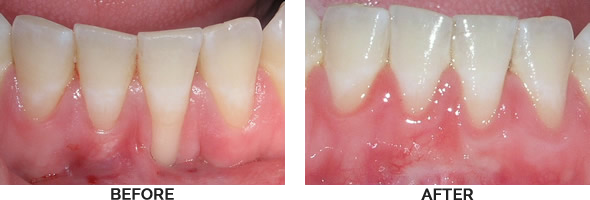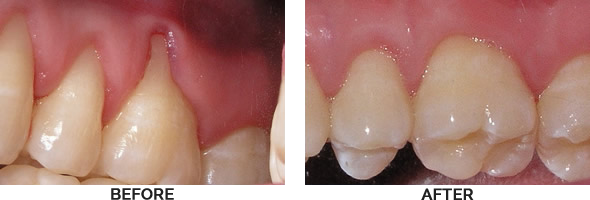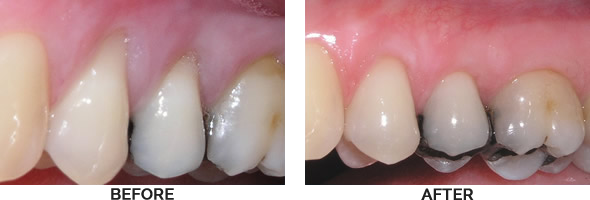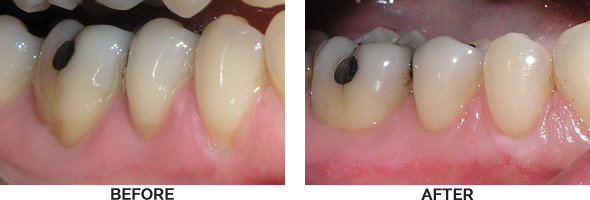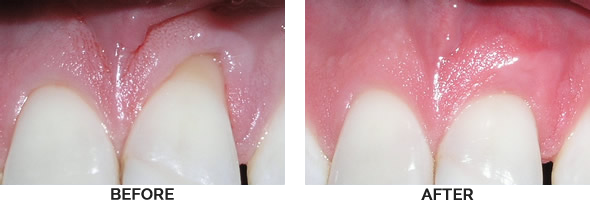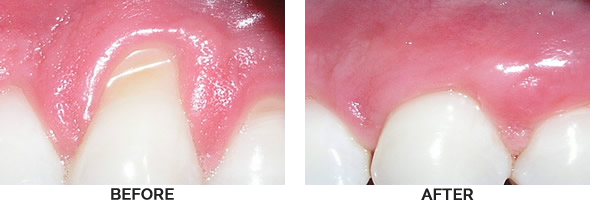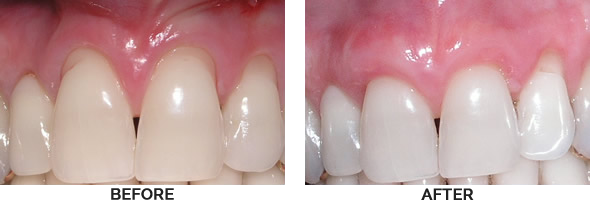Our practice provides a variety of surgical services.
Doctor Herrin prides himself on the fact that he is very conservative in his treatment recommendations and limits surgery to the areas where it is absolutely necessary. Periodontal procedures are available to regenerate the bone and gum tissue to their original function and cosmetic appearance.
This email address is being protected from spambots. You need JavaScript enabled to view it.
The Chao Pinhole® Surgical Technique, also know as Pinhole Gum Rejuvenation™, is a scalpel-free, suture-free, graft-free, minimally invasive procedure for correcting gum recession and saving teeth. Through a small hole made by a needle, specially designed instruments are used to gently loosen the gum tissue and glide it over the receded part of the tooth. This procedure can correct gum recession in as little as one treatment session and can prevent tooth loss and the need for other costly procedures.
Since there is no cutting or stitching, patients can expect minimal post-operative symptoms (pain, swelling, and bleeding). Patients are pleasantly surprised by the instant cosmetic improvement. The pinholes heal in 24 hours in most cases, and most patients are able to resume light normal activities within 24-48 hours after treatment.
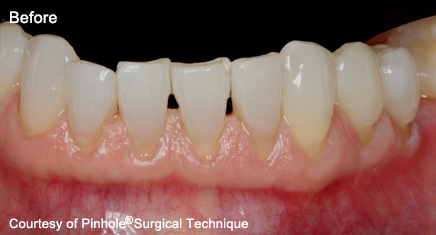
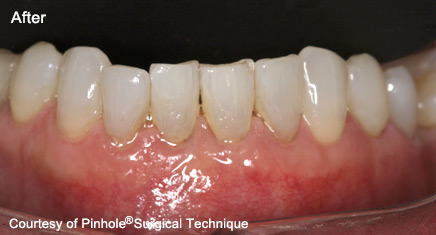
These procedures are a predictable way to cover unsightly, sensitive or exposed root surfaces and to prevent future gum recession. If you are unhappy with the appearance of short unsightly teeth, this can be greatly improved by a combination of periodontal procedures by our doctors and cosmetic dentistry by your dentist.
Dr. Herrin specializes in periodontal microsurgical techniques. He is one of New England's pioneers in this minimally invasive, atraumatic, advanced surgical approach. He has studied under the guidance of, and use techniques pioneered by Dennis A. Shanelec, D.D.S. of Santa Barbara, CA the innovator of periodontal microsurgery. As a result of refined specialized microsurgical techniques, the patient experiences small incisions, less pain, faster healing and more predictable esthetic results. Advanced surgical skills and technological innovations make periodontics with the benefit of the surgical microscope the most comfortable and effective therapy possible. Our clinical team looks forward to answering your questions about how surgical microscope techniques can benefit you.
When recession of the gingiva occurs, the body loses a natural defense against both bacterial penetration and trauma. When gum recession is a problem, gum reconstruction using grafting techniques is an option.
When there is only minor recession, some healthy gingiva often remains and protects the tooth, so that no treatment other than modifying home care practices is necessary. However, when recession reaches the mucosa, the first line of defense against bacterial penetration is lost.
In addition, gum recession often results in tooth root sensitivity to hot and cold foods as well as an unsightly appearance of the gum and tooth. Also, gum recession, when significant, can predispose to worsening recession and expose the root surface, which is softer than enamel, leading to root decay and root gouging.
A gingival graft is designed to solve these problems. A thin piece of tissue is taken from the roof of the mouth, or gently moved over from adjacent areas, to provide a stable band of attached root protecting gum or gingiva around the tooth. The gingival graft may be placed in such a way as to cover the exposed portion of the root and restore the normal appearance of the tooth.
The gingival graft procedure is highly predictable. When done with the benefit of a surgical microscope, the procedure is very comfortable, offers superior esthetic results and heals very quickly. Today's microsurgical procedures offer comfort and esthetic results far better than those offered using a conventional surgical approach so prevalent in periodontics for many years.
There are several reasons for crown lengthening: When decay occurs below the gum line it may be necessary to remove a small amount of bone and gum tissue to expose it. Your dentist may ask for this procedure before he or she makes a new crown for your tooth. Reshaping the gum and supporting tissues will allow your restorative dentist adequate room to place a quality final restoration.
Final restoration: Another indication for crown lengthening is when the front teeth are too short or of uneven length. Here esthetic crown lengthening can help create a healthy, symmetrical, highly aesthetic result.
Traditionally, gum disease is treated to eliminate the gum pockets by trimming away the infected gum tissue and by re-contouring the uneven bone tissue. Although this is still an effective way of treating gum disease, new and more sophisticated procedures are used routinely today in clinical situations where they apply. Osseous surgery provides access to tooth roots in deep pockets so that they can be cleaned to better eliminate bone destroying periodontal disease.
This surgical procedure "regenerates" the previously lost bone tissue. Most techniques utilize membranes, which are inserted over the bone defects. Some of these membranes are bio-absorbable and some require removal. Other regenerative procedures involve the use of bioactive gels and bone grafting around teeth to help rebuild lost bone.
Treatment methods depend upon the type of disease and how far the condition has progressed. The first step is usually a thorough cleaning that may include scaling to remove plaque and tartar deposits beneath the gum line. The tooth roots may also be planed to smooth the root surface allowing the gum tissue to heal and reattach to the tooth. In some cases, the occlusion (bite) may require adjustment.
Antibiotics or irrigation with anti-microbials (chemical agents or mouth rinses) may be recommended to help control the growth of bacteria that create toxins and cause periodontitis. In some cases, the doctor may place antibiotic fibers or gels in the periodontal pockets after scaling and planing. This may be done to control infection and to encourage normal healing.
When deep pockets between teeth and gums are present, it is difficult for the doctors to thoroughly remove plaque and tartar. Patients can seldom, if ever, keep these pockets clean and free of plaque. Consequently, surgery may be needed to restore periodontal health.

